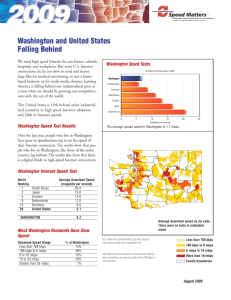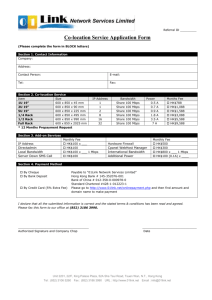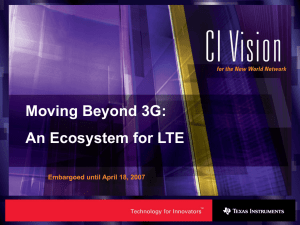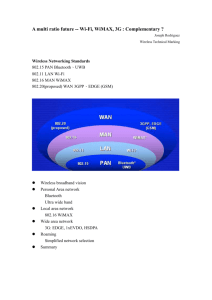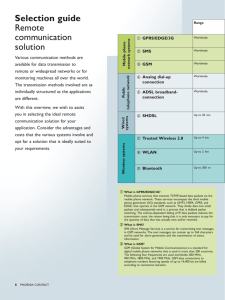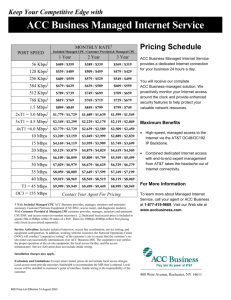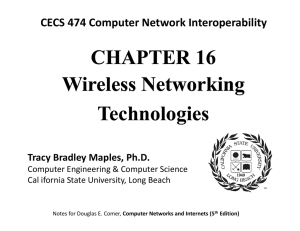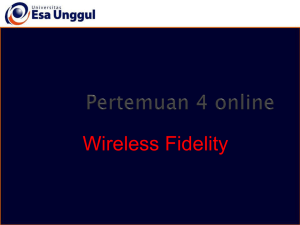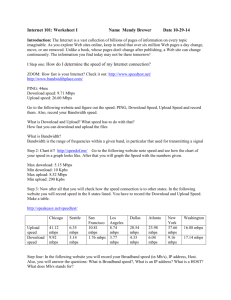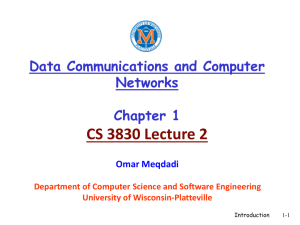4-G Technology
advertisement
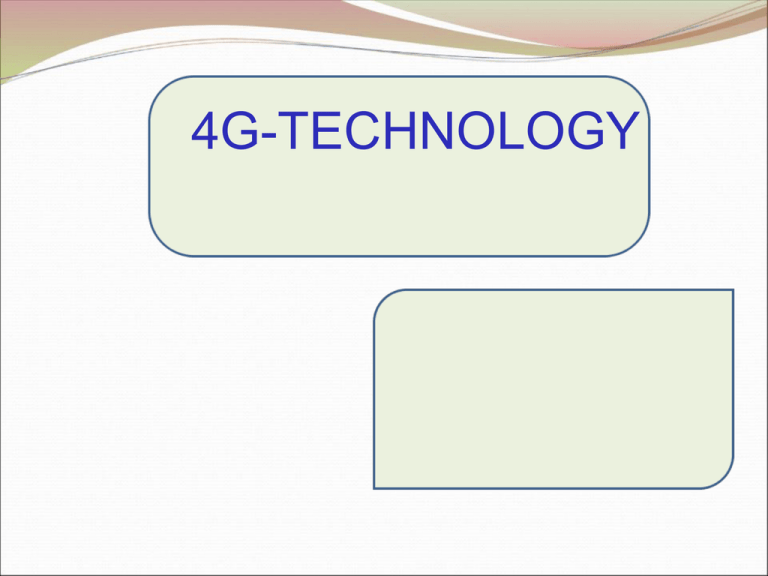
4G-TECHNOLOGY CONTENTS •Introduction •What is 4G? •Evolution of 4G •A look at fundamental requirements •Evolution of processors and DSP Technology for 4G •The 3G •The 4G CONTENTS: • • • • • • 3G:Some unfinished Business 4G Wireless: one view Path Losses And fading challenge Which countries have 4G? Infrastructure for 4G 4G in India • 4G, the successor of 3G, will soon become the standard for cellular wireless • The technology is currently available in some countries but it is still being perfected • The aim is to achieve “ultra broadband speed” – to be counted in gigabytes per second • 4G is short for Fourth (4th) Generation Technology. It is basically the extension in the 3G technology with more bandwidth and services offers in the 3G. • Will allow users to download a full-length feature film within five minutes • Will also be able to stream high-definition television and radio to hand-held devices • The basic difference between 3G and 4G is in data transfer and signal quality • The highest download and upload speed in 3G are 14 Mbps and 5.8 Mbps respectively • In 4G the download speed is up to 100 Mbps for moving users and 1 Gbps for stationary users • 4G is adoption of packet switching instead of circuit switching in voice and video calls • With packet switching, resources are only used when there is information to be sent across • 4G uses spiral multiplexing • The first commercial deployment was by Telia Sonera and NetCom • Telia Sonera branded the network “4G” • The modem devices on offer were manufactured by Samsung (dongle GT-B3710) • The network infrastructure were created by Huawei (in Oslo) and Ericsson (in Stockholm) A Look at Fundamental Requirements Human Sense Sound Sight Knowledge 1G-2G Voice - Low Speed Data 3G Voice Images Hypertext (HT) 4G Voice, Speech Video Files (Speech, HT, Video) Typical Bandwidth 10-80 Kbps 1 - 20 Mbps 0.5-10 Mbps Required Latency <160 ms <100 ms <5 s Principal Application Communication Entertainment Information ↓ Network Generation The 3G Large Coverage Outdoor - High Mobility Up to 14Mbps The 4G Macro Cells Large Coverage – 100Mbps Coverage Outdoor - High Mobility Pico Cells Isolated HotSpots – 1Gbps Coverage Indoor – Very Low Mobility • What we need o o Adaptive high performance transmission system Great candidate for SDR 3G: Some Unfinished Business Technical Financial • Improved coverage (e.g., residences) • Balance sheet cleanup (debt reduction) • Inter technology roaming • Capacity Utilization • Inter carrier compensation (esp. data services) • Business Models for New Services 4G Wireless: One View • 4G WOFDM high speed downlink “a wireless cable modem” • Complement to EDGE/UMTS • High peak data rates (up to 10 Mb/s) in a 5 MHz channel • • spectrum - 500 MHz to 3 GHz 3G EDGE/WCDMA network for uplink, downlink, control and signalling Path Loss and Fading Challenge Path Loss Reflected signals Delay arrive spread Spread out over 5 to 20 microsecond path loss up to ~ 150 dB (that is a 1 followed by 15 zeroes) Rayleigh Fading rapid fading of 20 to 30 dB (power varies by 100 to 1000 times in level at rates of about 100 times per second) • Except for the Scandinavian countries, a few countries have started the 4G commercially • In the US, Sprint Nextel initiated the service last year • Countries expected to launch 4G by this year are Germany, Spain, China, Japan and England • There are three primary technologies that support 4G – WiMax, LTE, and UMB • The main doubt is whether to implement WiMax or LTE • The advantages of LTE are: (i) Faster speed with 100 Mbps for download and 50 Mbps for upload (ii) It makes CDMA and GSM database moot (iii) It offers both FDD and TDD duplexing • Has already begun the process of introducing 4G • India is among the latecomers in 3G • It is felt that by the time the implement 3G fully, 4G technologies such as LTE will be available commercially • It has taken three years for the government to decide on 3G-spectrum auction policy • 4G could face the same delay unless India wants to catch up with the rest of the world THANK U & QUERIES ? ?
